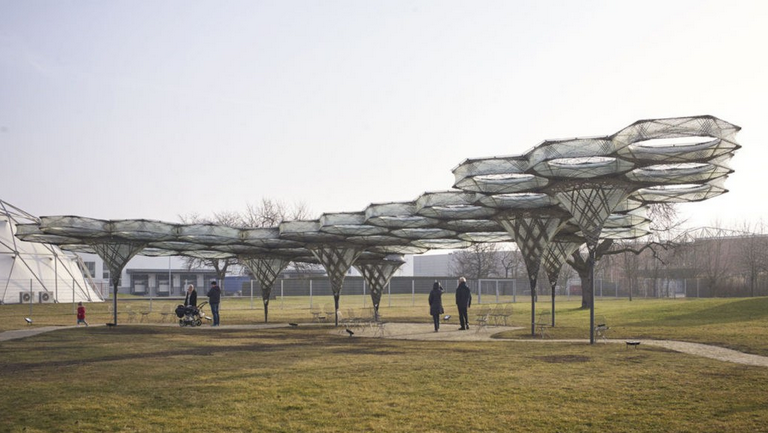An outdoor installation premiered at the V&A design museum in London, now based at the Vitra Design Museum in Germany, examines the current boom in robotics and the relationship between human and machine.
The Elytra Filament Pavilion, created at the University of Stuttgart, is made from modules that were defined by an algorithm and produced with the help of an industrial robot.
The 200 square metre structure is inspired by “lightweight construction principles found in nature, the fibrous structures of the forewing shells of flying beetles known as elytra”. To make each component, the robot wound resin-soaked glass and carbon fibres onto a hexagonal scaffold.

It is made from 40 hexagonal cells, each of which weighs around 45kg and takes about three hours to make. The hexagons and their seven supporting columns were created by a Kuka robot in a four-month process at the university’s Institute for Computational Design.
Achim Menges, an architect involved with the project, said: “The canopy grows in response to real-time sensing data, showcasing the profound impact of emerging technologies and related new alliances between the fields of design, engineering and natural science.
“Through this we seek to provide visitors with a unique experience… that offers a glimpse of novel architectural and engineering possibilities, which may transform our built environment in the future.”
The project was premiered at the V&A’s Pirelli Garden.
Images courtesy of the Vitra Design Museum/Julien Lanoo










